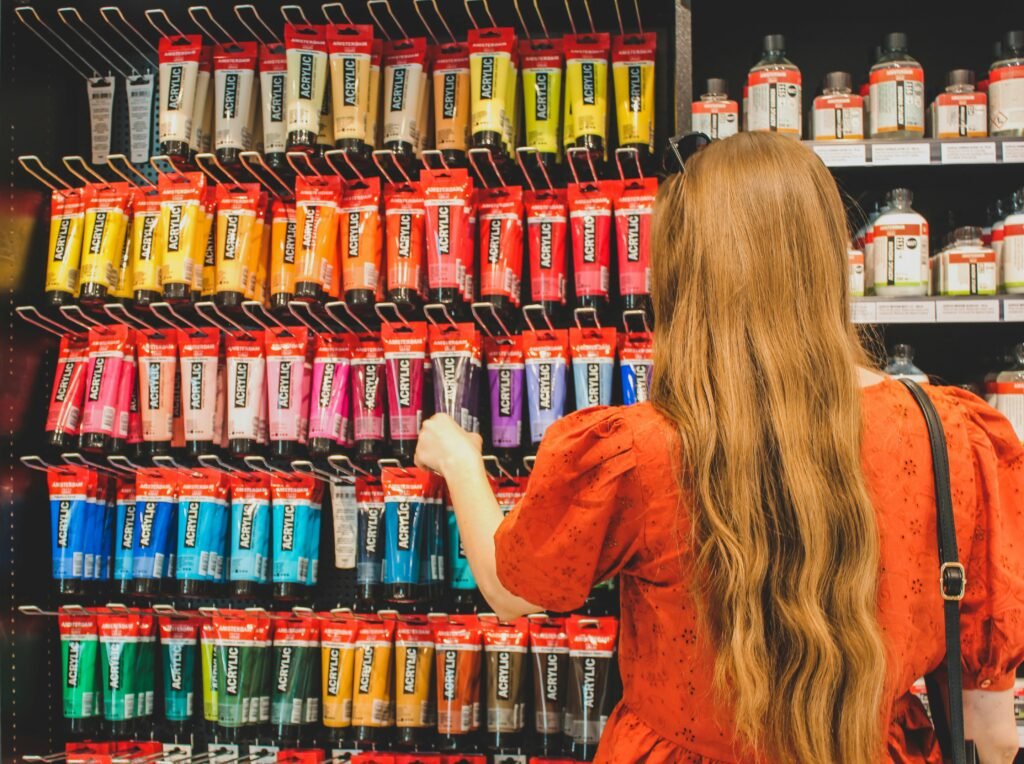
Choosing the right paint for your home can be a daunting task, especially when you’re trying to make an eco-friendly choice.
With increasing awareness about the harmful effects of conventional paints, many people are turning to eco-friendly alternatives.
In this comprehensive guide, we will review and compare the best eco-friendly paints on the market, providing detailed analysis, user testimonials, and tips for making the right choice for your home.
Understanding Eco-Friendly Paints
What Makes Paint Eco-Friendly?
Eco-friendly paints are designed to minimize their impact on the environment and human health.
Here are some key characteristics that define eco-friendly paints:
- Low VOCs: Volatile organic compounds (VOCs) are harmful chemicals that can off-gas from paint, causing indoor air pollution and health issues. Eco-friendly paints have low or zero VOC levels.
- Natural Ingredients: Many eco-friendly paints use natural ingredients such as plant oils, clay, and mineral pigments instead of synthetic chemicals.
- Biodegradability: Eco-friendly paints are often biodegradable, reducing their environmental impact when disposed of.
- Sustainable Production: Brands that produce eco-friendly paints typically follow sustainable practices, such as using renewable energy and reducing waste.
Benefits of Using Eco-Friendly Paints:
- Healthier Indoor Air Quality: Low or zero VOC levels reduce indoor air pollution, making your home safer for your family.
- Reduced Environmental Impact: Eco-friendly paints minimize the release of harmful chemicals into the environment.
- Safer for DIY Projects: With fewer toxic fumes, eco-friendly paints are safer for DIY enthusiasts to use.
Top Eco-Friendly Paint Brands
1. Benjamin Moore Natura
Benjamin Moore is a well-known name in the paint industry, and their Natura line is one of the top choices for eco-friendly paints.
Key Features:
- Zero VOCs: Natura paint has zero VOCs, making it a great choice for improving indoor air quality.
- Low Odor: The paint has a low odor, making it more pleasant to use and ideal for indoor projects.
- Wide Color Range: Benjamin Moore offers a wide range of colors, allowing you to find the perfect shade for your home.
User Testimonials:
- Jessica’s Experience: “I used Benjamin Moore Natura for my daughter’s bedroom, and I was impressed with how little odor there was. The color coverage was excellent, and it dried quickly. I feel better knowing it’s a healthier option for my family.”
- Mark’s Review: “As a professional painter, I’ve used many different brands, and Natura is one of my favorites for eco-friendly projects. It’s easy to apply, and the finish looks great.”
Pros:
- Zero VOCs and low odor
- Excellent coverage and durability
- Wide range of colors
Cons:
- Slightly higher price compared to conventional paints
Explore Benjamin Moore Natura Paints
2. ECOS Paints
ECOS Paints is a brand dedicated to producing non-toxic, eco-friendly paints that are safe for both people and the planet.
Key Features:
- Zero VOCs and Toxins: ECOS Paints are free from VOCs, solvents, and other harmful chemicals.
- Odorless: The paints are virtually odorless, making them ideal for sensitive individuals.
- Custom Colors: ECOS Paints offers custom color matching, allowing you to achieve the exact shade you want.
User Testimonials:
- Emily’s Experience: “I’m very sensitive to paint fumes, and ECOS Paints was a lifesaver. There was no smell at all, and the color turned out beautifully. It’s great to know it’s non-toxic.”
- John’s Review: “I used ECOS Paints for my living room, and I’m very satisfied with the results. The paint went on smoothly, and the finish is flawless. I highly recommend it for anyone looking for a non-toxic option.”
Pros:
- Zero VOCs and toxins
- Odorless and safe for sensitive individuals
- Custom color matching available
Cons:
- Limited availability in stores; primarily sold online
3. Clare Paint
Clare Paint is a newer brand that focuses on providing high-quality, eco-friendly paints with a curated selection of colors.
Key Features:
- Zero VOCs: Clare Paints are zero VOC, ensuring a healthier indoor environment.
- Greenguard Gold Certified: The paints meet stringent standards for low chemical emissions.
- Designer-Selected Colors: Clare offers a curated palette of designer-selected colors, making it easy to choose the perfect shade.
User Testimonials:
- Samantha’s Experience: “I love the colors offered by Clare. They’re stylish and modern. The paint was easy to work with, and the coverage was fantastic. Plus, it’s eco-friendly, which is a huge plus for me.”
- Michael’s Review: “Clare Paint made my DIY project so much easier. The online color selection and ordering process were seamless, and the paint itself was top-notch. I’m very impressed with their commitment to sustainability.”
Pros:
- Zero VOCs and Greenguard Gold certified
- Curated selection of stylish colors
- Easy online ordering process
Cons:
- Limited color options compared to larger brands
4. Green Planet Paints
Green Planet Paints is a brand that takes sustainability seriously, using plant-based resins and mineral pigments in their products.
Key Features:
- Plant-Based Resins: The paints use plant-based resins instead of synthetic ones, reducing their environmental impact.
- Mineral Pigments: Natural mineral pigments provide vibrant, long-lasting colors.
- Zero VOCs: Green Planet Paints are free from VOCs, ensuring healthier indoor air quality.
User Testimonials:
- Linda’s Experience: “Green Planet Paints are amazing. The colors are so rich and vibrant, and it’s great to know they’re made from natural ingredients. The fact that they’re zero VOC is a huge plus.”
- Dave’s Review: “I used Green Planet Paints for my kitchen, and I’m very happy with the results. The paint was easy to apply, and the finish is beautiful. I highly recommend it for anyone looking for a truly eco-friendly option.”
Pros:
- Plant-based resins and mineral pigments
- Zero VOCs
- Rich, vibrant colors
Cons:
- Higher price point compared to some other eco-friendly brands
5. Behr Premium Plus
Behr Premium Plus is a widely available option that offers good performance and eco-friendly features.
Key Features:
- Low VOCs: Behr Premium Plus has low VOC levels, making it a safer choice for indoor use.
- Wide Availability: Available at major retailers like Home Depot, making it easy to find.
- Excellent Coverage: The paint provides excellent coverage and durability.
User Testimonials:
- Nancy’s Experience: “I used Behr Premium Plus for my bathroom, and it turned out great. The paint covered well, and there was very little odor. It’s a good option if you’re looking for something eco-friendly and widely available.”
- Steve’s Review: “Behr Premium Plus is my go-to paint for most projects. It’s affordable, performs well, and has low VOCs. I appreciate that it’s eco-friendly without compromising on quality.”
Pros:
- Low VOCs
- Widely available at major retailers
- Good coverage and durability
Cons:
- Not zero VOC; may not be suitable for highly sensitive individuals
Comparing Eco-Friendly Paint Brands
To help you make an informed decision, let’s compare the key features, pros, and cons of the top eco-friendly paint brands mentioned above.
| Brand | VOC Level | Key Features | Pros | Cons |
|---|---|---|---|---|
| Benjamin Moore Natura | Zero | Low odor, wide color range | Excellent coverage, wide color range | Higher price |
| ECOS Paints | Zero | Non-toxic, odorless, custom colors | Odorless, custom color matching | Limited availability in stores |
| Clare Paint | Zero | Greenguard Gold certified, curated colors | Stylish colors, easy online ordering | Limited color options |
| Green Planet Paints | Zero | Plant-based resins, mineral pigments | Natural ingredients, vibrant colors | Higher price |
| Behr Premium Plus | Low | Widely available, good coverage | Affordable, widely available | Not zero VOC |
Tips for Choosing the Right Eco-Friendly Paint

1. Consider Your Needs
- Sensitivity: If you or your family members are sensitive to paint fumes, choose a paint with zero VOCs and minimal odor.
- Color Preferences: Look for brands that offer the colors you need. Some brands offer custom color matching if you have specific shades in mind.
- Project Type: Consider the type of project you’re working on. Some paints are better suited for specific applications, such as high-traffic areas or moisture-prone rooms.
2. Check Certifications
- VOC Levels: Verify the VOC levels of the paint. Zero VOC paints are the best choice for indoor air quality.
- Eco-Certifications: Look for certifications such as Greenguard Gold, which indicate low chemical emissions and high environmental standards.
3. Test Before You Buy
- Sample Sizes: Purchase sample sizes to test the paint on a small area before committing to a larger quantity.
- Application: Pay attention to how the paint applies, its coverage, and the drying time.
4. Consider the Brand’s Sustainability Practices
- Production Methods: Research the brand’s production methods and commitment to sustainability.
- Packaging: Some brands use recyclable or biodegradable packaging, further reducing their environmental impact.
How to Paint Your Home with Eco-Friendly Paints

Preparation:
- Clean the Surface: Ensure the surface is clean and free from dust, dirt, and grease. Use a mild detergent and water to clean walls, then rinse and let dry.
- Repair Imperfections: Fill any cracks or holes with spackle or wood filler. Sand the surface smooth once it’s dry.
- Protect Surrounding Areas: Use painter’s tape to protect trim, windows, and other areas you don’t want to paint. Lay down drop cloths to protect floors and furniture.
Application:
- Primer: Apply a primer if needed. Some eco-friendly paints have built-in primers, but if your walls are stained or previously painted with a dark color, a separate primer may be necessary.
- Painting: Stir the paint thoroughly before application. Use a high-quality brush or roller to apply the paint in even strokes. Apply multiple thin coats rather than one thick coat for better coverage and a smoother finish.
- Drying: Allow the paint to dry completely between coats. Follow the manufacturer’s instructions for drying times.
Finishing Touches:
- Remove Tape: Carefully remove painter’s tape before the paint fully dries to avoid peeling.
- Clean Up: Clean brushes, rollers, and other tools with soap and water (if using water-based paint) or the appropriate solvent.
- Ventilation: Ensure good ventilation during and after painting to allow any remaining fumes to dissipate.
Conclusion
Choosing eco-friendly paints for your home is a great way to improve indoor air quality, reduce your environmental impact, and create a healthier living space for your family.
With a variety of high-quality options available, you can find the perfect paint to suit your needs and preferences.
From Benjamin Moore Natura’s zero VOC formula to ECOS Paints’ non-toxic ingredients and Clare Paint’s curated color palette, each brand offers unique benefits that make them worthy of consideration.
By following our tips for choosing and applying eco-friendly paints, you can achieve beautiful, lasting results while staying true to your commitment to sustainability.
If you found this guide helpful, share it with your friends and family. Together, we can make a difference by choosing eco-friendly products and reducing our environmental footprint.


